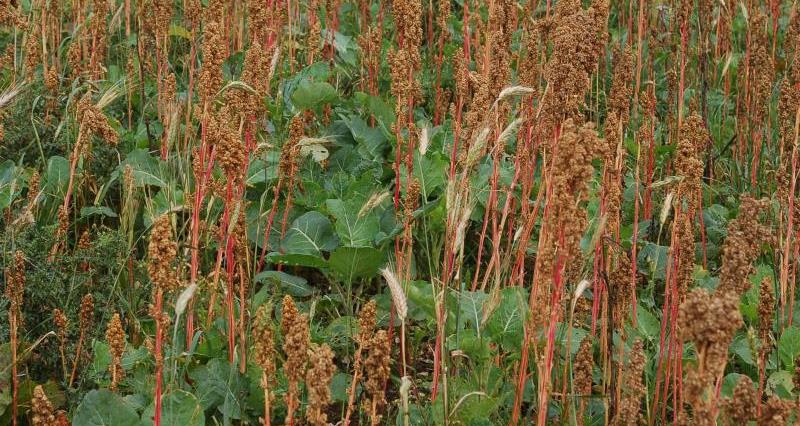What
Wild bird cover crops sown with seed-bearing plants and left unharvested throughout the winter to feed seed-eating birds. It is estimated that 2 hectares of seed-rich cover crop per 100 hectares of arable land will support seed-eating birds throughout the winter.
Why
Wild bird cover crops provide food and shelter for game birds – the only difference between these and traditional game strips is that the priority is the provision of seed food for a wide range of seed eating birds, rather than only providing holding cover for game birds.
An annual cereal-based mix will provide the most reliable food source for yellowhammers and corn buntings. Game birds benefit from the cover provided by kale-based biennial mixtures. A mix including a cereal and an oil-rich crop (e.g. kale, linseed or quinoa) will benefit the widest range of species.
Species that will benefit include grey partridge, song thrush, tree sparrow, linnet, yellowhammer, reed bunting and corn bunting.
How
Preparation and management
- Site the plots next to thick hedgerows for safe cover.
- The seedbed should be prepared and the crop drilled as for a commercial arable crop.
- The ideal time to establish a mix is in April or May. If spring sowing is not possible, then crops can be established in the autumn, but then only provide seed food in alternate years (for annual mixes) or in two out of three years (for biennial mixes).
- A cereal component is important for yellowhammer and corn bunting and is also taken by game birds and sparrows, while an oil-rich crop (e.g. kale, linseed or quinoa) is important for finches. Crops such as mustard, forage rape and millet can also be included. Two-year crops including a biennial crop, such as kale, provide better cover for game birds, whereas annual, cereal-based mixtures provide continuous food for buntings. A mix of crop types will provide the maximum benefits. If biennial crops are used, establishing blocks in alternate years will ensure that there will be a mix of seeds available every winter.
- Sowing a cereal mix and broadcasting the other crops before rolling should achieve good establishment. Nitrogen fertiliser may be required for successful establishment and to boost the seed yield of the crop - the amount should be determined by the needs of the component crops. As with all crops, wild bird cover is susceptible to competition from weeds, and attack by pests and diseases during establishment. Insects and weed seeds are important components of the diet of farmland birds, so the use of insecticides and herbicides should be kept to a minimum. Any use of insecticides and most herbicides will require a derogation for plots grown as part of agri-environment scheme funding.
- Crops can be replaced annually or every two years.
- You may need to relocate plots if disease levels (e.g. of brassica club root) prevent establishment.
- At the end of its final winter, destroy the cover after late February, ideally as late as possible, before reestablishing the cover in April or May.
How to create a brood-rearing cover for grey partridges
- Aim to create a 20-metre strip of open vegetation alongside a tussocky grass margin where partridges are likely to nest, in order to provide insect-rich foraging and drying areas.
- The seed rate should be low to create an open habitat that gives birds access to the ground and low growing weeds (eg a mix of 60 kilograms cereal and 6 kilograms mustard or rape per hectare).
- Establish in the spring or autumn each year.
